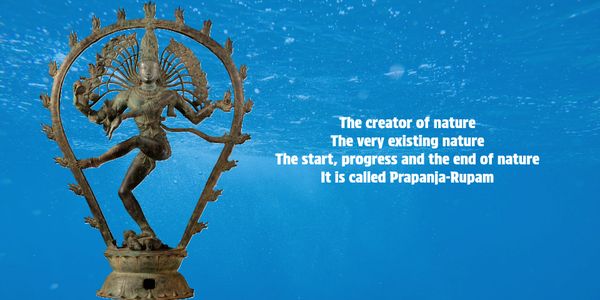Shaivam

The Essence of Shaivam
Shaivam is a religious philosophy centered on the progress and sustenance of humanity. This website explores deep philosophical insights, spiritual teachings, and life perspectives, where the Universe is viewed as a manifestation of the supreme beings, Eshwara and Parvati.
Viswesam and Eshwaram

Viswesam
Viswesam represents legacy and a widespread, static reality where nature is perceived as unchanging. This perspective, characterized as Jeevajeevam (consciousness of nature), also posits that man and woman belong to different worlds.

Eshwaram
Eshwaram embodies modernity and a growing, dynamic reality based on the belief that nature always changes. Known as Ruparupam (consciousness of progress), this view holds that man and woman are together in the same world.
Dual Monism
Dual Monism is a philosophical perspective that recognizes two seemingly opposing realities as complementary expressions of a single, unified existence. Though these dual aspects differ in nature and characteristics, they are not independent or contradictory; rather, they are intertwined facets of the same ultimate truth. This principle can be seen in various pairs such as Viswesam and Eshwaram, representing static and progressive realities; Rupam and Arupam, symbolizing external and internal divinity; and Swarnam and Arnam, denoting the visible and the invisible. Dual Monism embraces both the constancy of “nothing changes” and the dynamism of “everything changes,” revealing how existence holds space for both fullness and emptiness—everything and nothing. It acknowledges the interplay between the existing reality and the creating reality, illustrating that nature simultaneously creates, maintains, and transforms itself. Ultimately, Dual Monism conveys that unity is found within duality, and duality is an expression of a deeper unity.
Video
The togetherness of Eshwara and Parvathy being the most powerful entity in this prapanjam
Humans are independent and authoritative
They know what is right or wrong
They are independent thinkers
They are capable of solving problems
They are capable of understanding and achieving consciousness
They are responsible for scientific and spiritual progress
They have gratitude
They call him Mahadeva
They have passion, attachments, emotions and feelings
They enjoy every moment of life
They have instincts to feel right or wrong
They can innovate
They know the worth
They have gratitude
They call her Loganayaki

If you have the right intention, you will automatically acquire the right competency to rule the world.

I have the freedom of expression so I call him Shivam. I have the freedom of independent thinking so I call him Mahadeva. I have the freedom to seek better life so I call him Visweswara.
Shaivam in Pictures
Frequently Asked Questions
Please reach us at vijay80@gmail.com if you cannot find an answer to your question.
Shaivam is a collection of philosophical teachings that guide individuals towards a meaningful and fulfilling life. It emphasizes the core principles necessary for living a satisfying life, focusing on what truly drives our motivation and propels us forward. By cultivating positive values and a deeper understanding of life's purpose, Shaivam encourages personal growth and positivity, helping each of us find harmony and direction.
There are many ways to get involved with Shaivam, including volunteering, participating in discussions, or attending our events. Stay connected by subscribing to our website updates to receive the latest information and insights.
We provide a range of services, including fresh and evolving high-quality philosophical insights through articles, books, and videos. We also invite discussions and conversations to further the collective wisdom. Stay connected to our website for the latest updates and information.
Contact Us
Shaivam
India Bulls Greens Apartment, Perumbakkam, Perumbakkam Main Road, VGP Prabhu Nagar, Medavakkam, Chennai, Tamil Nadu, India
Subscribe
Sign up for updates.
This website uses cookies.
We use cookies to analyze website traffic and optimize your website experience. By accepting our use of cookies, your data will be aggregated with all other user data.

